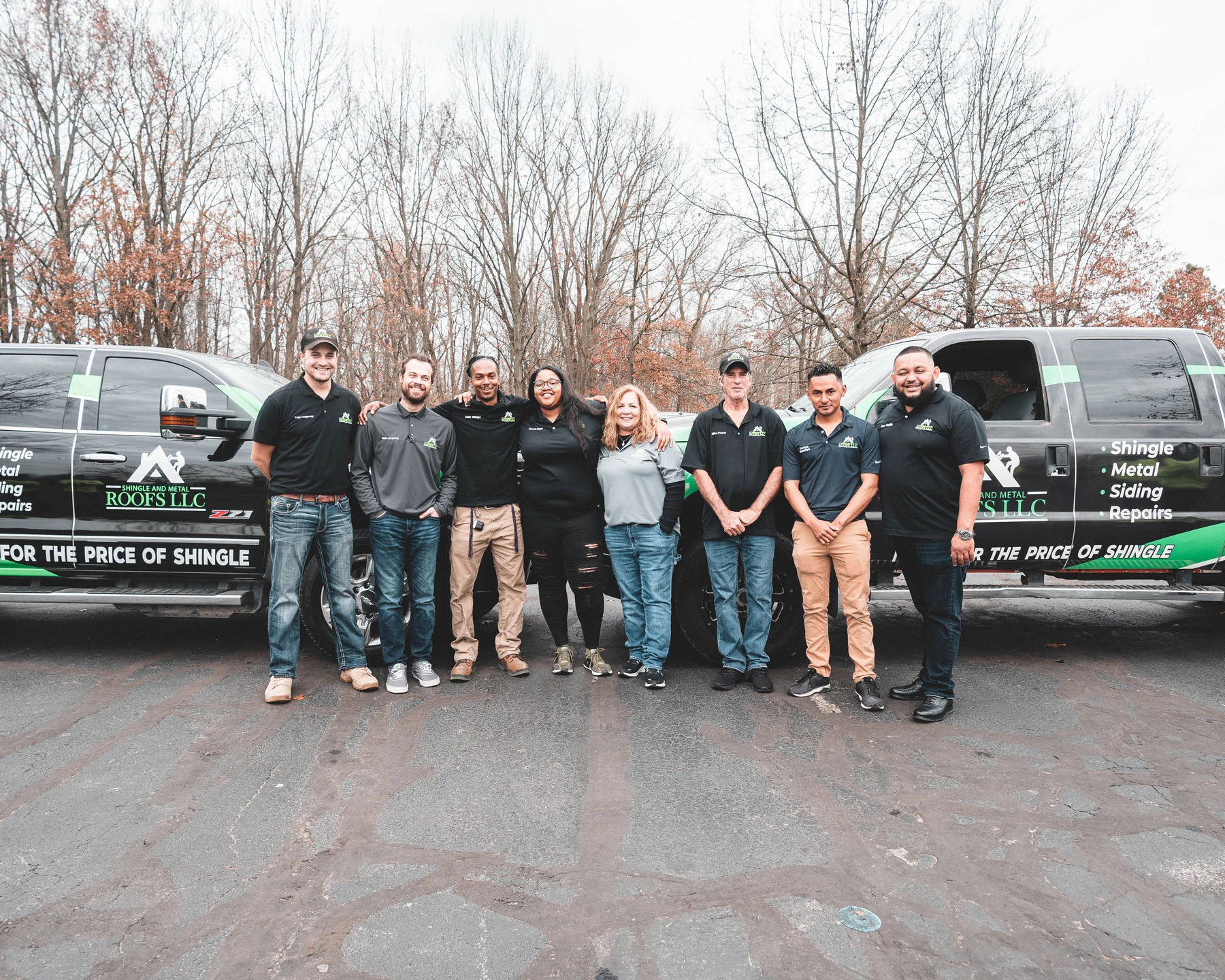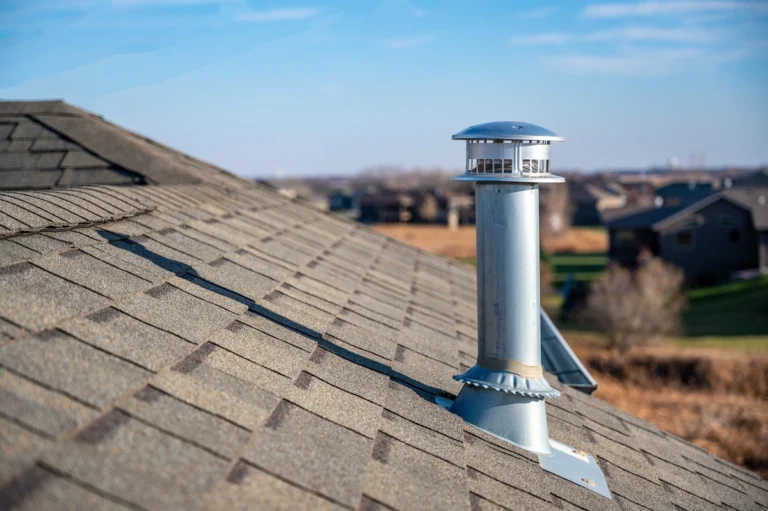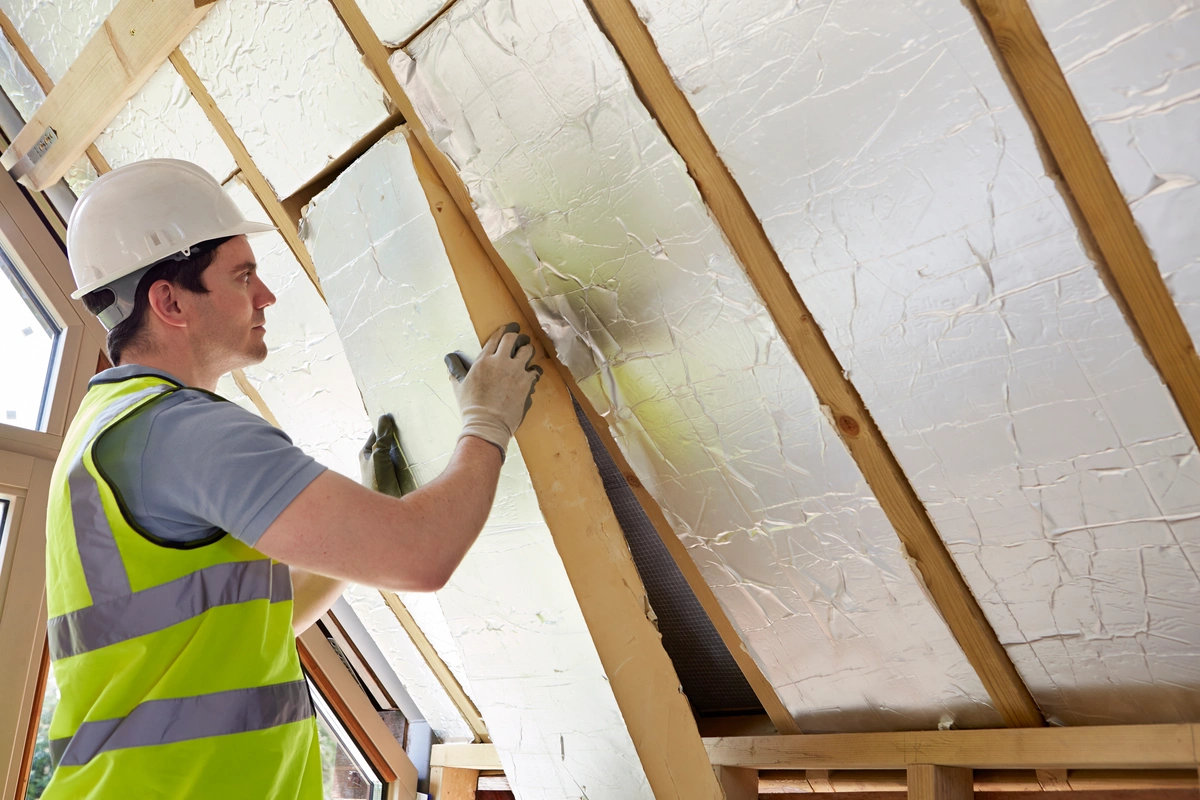
When it comes to keeping your home comfortable and energy-efficient, proper insulation is key. And when we talk about insulation, don’t forget to give your roof some love! Roof insulation can make a significant difference in maintaining consistent indoor temperatures and reducing energy bills. In this homeowner’s guide, we’ll explore four great roof insulation types that can help you keep your home cozy while saving on energy costs. Let’s dive in!
Inside this blog:
- Why roof insulation is important
- 4 popular types of roof insulation
Keep reading to figure out which type of roof insulation will be best for your home!
Why Roof Insulation Matters 🌡️
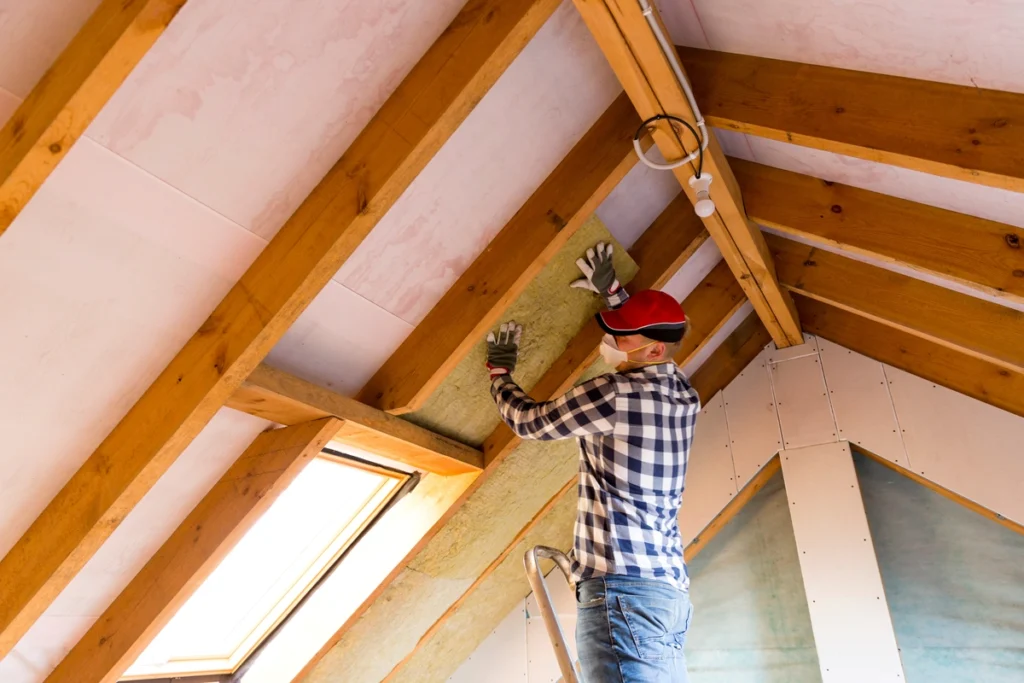
Before we jump into the types of roof insulation, let’s understand why it’s crucial for your home:
Energy Efficiency
Roof insulation helps regulate indoor temperatures by preventing heat from escaping during the winter and blocking heat from entering during the summer. This results in lower heating and cooling costs.
Comfort
Proper insulation keeps your home comfortable year-round by eliminating drafts and temperature fluctuations.
Environmental Benefits
By reducing energy consumption, you’re not only saving money but also reducing your carbon footprint and contributing to a more sustainable environment.
Moisture Control
Some insulation types also provide a barrier against moisture, helping prevent potential water damage.
Now, let’s explore four fantastic roof insulation options for your home.
1. Fiberglass Insulation
Fiberglass insulation, often in the form of batts or rolls, is one of the most commonly used insulation materials in residential roofing. Here’s why it’s a great choice:
- Excellent Thermal Performance: Fiberglass has high R-values, indicating its ability to resist heat transfer, making it effective in all climates.
- Cost-Effective: It’s budget-friendly and readily available, making it an attractive option for homeowners.
- Easy Installation: Fiberglass insulation is relatively easy to install, especially in attic spaces or between roof rafters.
- Non-Combustible: It’s non-combustible, adding an extra layer of fire resistance to your home.
2. Cellulose Insulation
Cellulose insulation is made from recycled paper products and treated to be fire-resistant and insect-resistant. Here’s why it’s a sustainable and effective choice:
- Eco-Friendly: Made from recycled materials, cellulose is an environmentally friendly choice.
- Good Thermal Performance: It provides excellent thermal insulation and can be densely packed for added efficiency.
- Sound Dampening: Cellulose insulation also helps reduce noise transmission, making your home quieter.
- Moisture Control: It can help manage moisture and prevent mold growth.
3. Spray Foam Insulation
Spray foam insulation is a versatile and effective choice for roof insulation. It’s applied as a liquid that expands and hardens into a solid foam. Here’s why it’s worth considering:
- Air-Sealing Qualities: Spray foam insulation creates an airtight seal, preventing air leakage and drafts effectively.
- High R-Value: It has a high R-value per inch, making it highly efficient in terms of space utilization.
- Moisture Resistance: Closed-cell spray foam is resistant to moisture, adding an extra layer of protection against leaks.
- Longevity: It’s known for its durability and can last a long time without needing replacement.
4. Radiant Barrier Insulation
Radiant barrier insulation is a bit different from traditional insulation. It reflects heat away from your roof, making it a great choice for hot climates. Here’s why it’s a unique option:
- Reflective Properties: Radiant barriers reflect a significant portion of the sun’s radiant heat, keeping your home cooler in hot weather.
- Energy Savings: By reducing heat transfer, radiant barriers can lead to substantial energy savings in cooling costs.
- Low Maintenance: Unlike traditional insulation materials, radiant barriers require little to no maintenance.
- Easy Installation: They are typically installed during roof construction or renovations.
Choosing the Right Roof Insulation
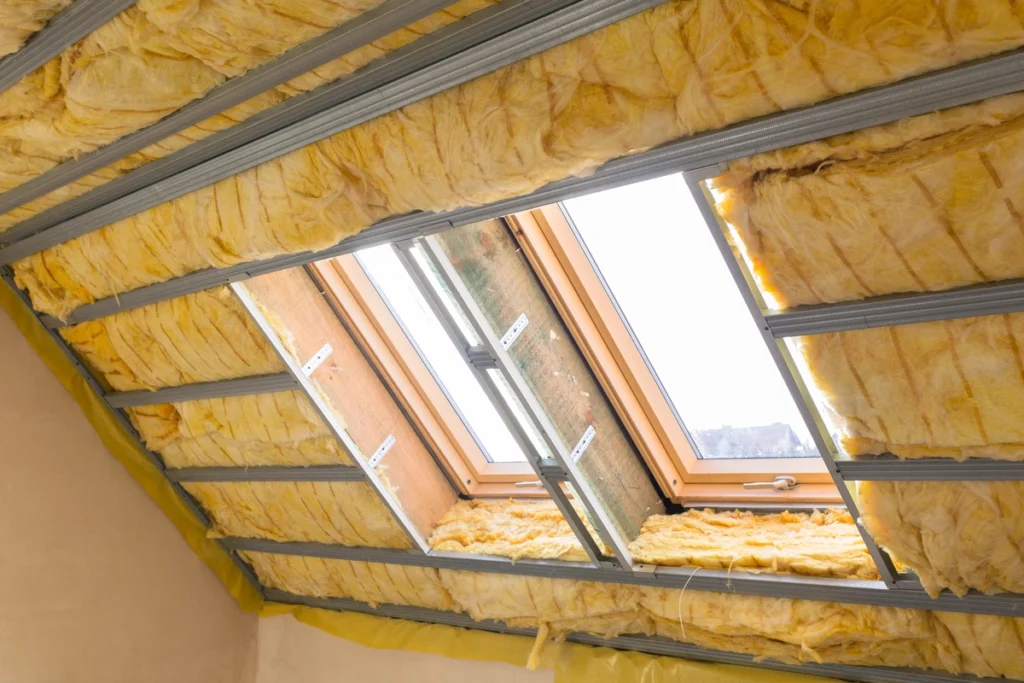
When selecting the best roof insulation for your home, consider the following factors:
- Climate: Your local climate plays a significant role in determining the most suitable insulation type. Hot, cold, or mixed climates may require different solutions.
- Budget: Your budget will influence the insulation material you can afford. Keep in mind that insulation is an investment that pays off over time.
- Energy Efficiency Goals: If you’re aiming for maximum energy efficiency, consider insulation with high R-values and excellent thermal performance.
- Installation Ease: Some insulation materials are easier to install than others, so consider your DIY skills or the cost of professional installation.
Insulating Your Attic: A Crucial Step 🔨
When it comes to roof insulation, insulating your attic is a critical step. A well-insulated attic can significantly impact your home’s energy efficiency and comfort.
Here’s how to get it right:
Assess Your Current Attic Insulation
It’s essential to start by thoroughly assessing your attic’s current insulation situation. This step involves a comprehensive examination of both the quantity and quality of insulation present. Begin by checking the insulation’s depth and coverage to determine if it meets the recommended standards for your region and climate.
Choose the Right Insulation
When it comes to selecting the right insulation material for your attic, you’ll need to consider several key factors, including your local climate, budget constraints, and insulation performance characteristics. Each type of insulation has its advantages and disadvantages, so it’s essential to make an informed decision.
Start by researching the insulation options available in your area. Common choices include fiberglass batts or rolls, cellulose, spray foam, and radiant barriers. To determine the most suitable option, take into account your specific climate conditions. For example, in colder regions, insulation with a high R-value is crucial to prevent heat loss during the winter, while in hot climates, materials with reflective properties, like radiant barriers, may be preferred to reduce heat gain.
Seal Air Leaks
Before adding new insulation to your attic, it’s imperative to address any existing air leaks. Air leaks, such as gaps, cracks, or openings in the attic’s structure, can significantly compromise the effectiveness of your insulation. These leaks allow conditioned indoor air to escape and unconditioned outdoor air to infiltrate, leading to energy waste and temperature inconsistencies.
Begin your air sealing efforts by meticulously inspecting the attic for any potential sources of air leaks. Common trouble spots include gaps around pipes, vents, electrical fixtures, and the attic access hatch. Additionally, check for cracks or openings around the attic’s perimeter, where the walls meet the ceiling.
Follow Installation Guidelines
Whether you choose to install attic insulation yourself or hire a professional contractor, it’s essential to adhere to recommended installation guidelines to achieve the best possible results. Proper installation plays a significant role in insulation performance and long-term energy savings.
By following installation guidelines diligently, you’ll maximize the effectiveness of your attic insulation and enjoy the full range of benefits it offers, including improved energy efficiency, enhanced comfort, and potential cost savings.
Boost Your Energy Efficiency With the Right Roof Insulation 🏡
Investing in the right roof insulation is a smart move for homeowners looking to improve energy efficiency, comfort, and environmental sustainability. Consider your climate, budget, and insulation goals when selecting the best insulation type for your home. Whether you choose fiberglass, cellulose, spray foam, or a radiant barrier, a well-insulated roof will keep your home cozy and your energy bills in check for years to come.
Contact our expert team of roofers at Shingle and Metal Roofs today and experience speedy turnaround times and unmatched craftsmanship on your home. We’re excited to hear your questions and wants for your next roofing project!

